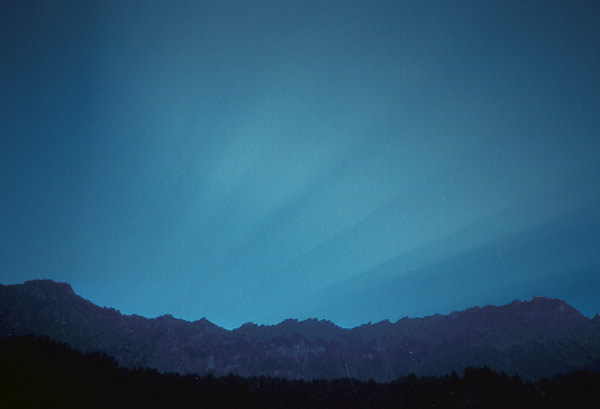
Rays & Shadows
Crepuscular rays
Formation
Sky-wide rays
Twilight rays
Lunar rays
Reflected rays
More images
Mystery Painting
Anti-crepuscular
Cloud shadows
Mountain Shadow
Earth's Shadow Blue Sky
Sunsets
Sunset Mirages
Green Flash
Moonrise/set
Opposition effect
Water Droplets
Rainbows
Ice Halos
High Atmosphere
Links & Resources
Search - Index
123456789012345678

| Twilight rays |
 |
|
| Twilight rays Locarno, Switzerland. Taken by Tony Williams of Liverpool Astronomical Society August 1998. ©Tony Williams, reproduced with permission. | |
Crepuscular derives from the Latin "crepusculum" for twilight. Strictly speaking, only twilight rays should be called crepuscular but in practice the term is used for sunbeams at any time of day. True twilight rays are visible after the sun has set and is up to 4º below the horizon. They are formed from shadows cast by large cloud banks or mountains still in sunlight and up to tens or even several hundred miles away. The rays arch high across the sky and sometimes even form anti-crepuscular rays. Look carefully for them, they are bluish-green against the glowing purple of the twilit sky. |